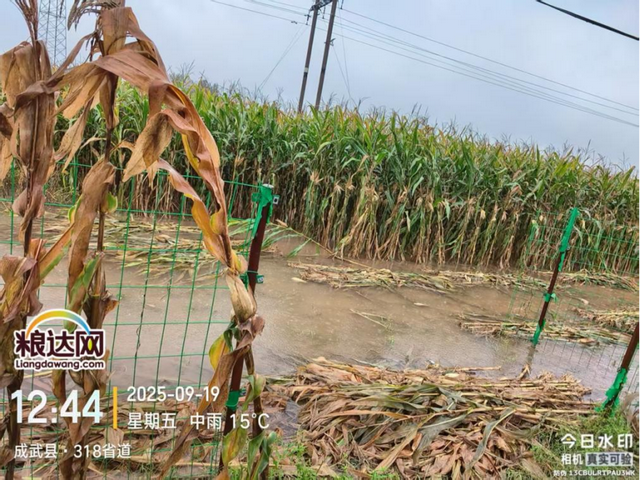Last week, the China Women's News warned readers about the serious threat of pollution from livestock, a far greater source of pollution than industry. The article reported that the latest data (2010) from Ministry of Environmental Protection surveys showed that livestock was the largest source of chemical oxygen demand (COD, a measure of water pollution), accounting for 45 percent of the total, and it also accounted for 25 percent of ammonia emissions. The COD from livestock was reportedly over 4 times industrial COD and ammonia emissions were 3 times industrial emissions. If you'd like examples of the impacts of livestock pollution, click on the "pollution" tag at the bottom of this post.
With rising living standards and a big boost from government officials since the 1980s, China's livestock industry grew to become the world's biggest. Until the 1970s, China's livestock were relatively few in number and they were scattered over the countryside. Manure was actually the main product of pigs--used for fertilizer--the meat and bristles were secondary products. However, in the 1980s Chinese officials came up with a "modernization" strategy for livestock. Animals are now raised in concentrated numbers in large farms or specialized villages and there is far too much waste produced to use as fertilizer.
According to China's first census of pollution sources released in 2009, livestock produced 243 million metric tons of manure and 163 million metric tons of urine, little of it treated. That year China reported producing 69 mmt of meat, so that's 4.4 tons of waste per ton of meat. These numbers are much lower than others reported in Chinese journals and seem low.
The Women's News article cites the example of Changde Prefecture in Hunan Province which produces 19 billion yuan of livestock products annually as well as 1 million tonnes of waste, of which 60 percent is untreated and contaminates the water, air and soil. News media in Taoyuan County reported that the air was filled with a pungent stench and streams had turned black, polluting the water supply for a million people downstream.
In August 2012, news media in Henan reported that pig farms around a reservoir had fouled the water so that the bottom was no longer visible. Local villagers complained that they couldn't wash their clothes in the water. Those who swam or bathed in the water got painful itching on their skin.
The article warns that livestock pollution is a important reason for declining water quality. Livestock manure contains large amounts of nitrogen and phosphorus nutrients, which causes excessive growth of organisms when it enters bodies of water, leading to eutrophication.
Livestock waste also contaminates soil and the crops grown in it. In many regions animal numbers exceed the soil's ability to absorb the nutrients from manure. Waste also contains feed additives not absorbed by the animals: antibiotics, hormones, and metals like copper, lead, iron, chromium, arsenic and zinc that accumulate in the soil and may be absorbed by plants.
A 2009 article posted on the Peoples Daily site explained why so many heavy metals are added to pig feed. Copper sulfate is popular because it enhances the absorption of nutrients by pig intestines, increasing feed efficiency. A professor quoted in the article said that farmers often add copper to prevent piglets from getting diarrhea (a common malady on Chinese farms). Chinese feed mills often add arsenic to feed because it turns their skin red and makes their fur shiny, giving them a vigorous appearance. Feed mills feel they have to add metals to make their feed competitive. One feed miller quoted in the article said, "The problem of excessive heavy metal in feed is much worse than 'lean meat powder' (clenbuterol)." Heavy metals can enter the human body either by consuming its residue in animal products or from crops grown in the soil around the farms. The professor estimated that 90 percent of the copper sulfate exited the pig's body in its manure--turning it black. The accumulation of heavy metals causes "dead soil" around pig farms.
The Women's News article also warns that livestock can spread disease when raised near humans. Manure contains microorganisms, can encourage mosquitoes, and can affect sanitation in villages. It is said that slaughtering 100,000 head (of pigs?) pollutes the land in a 4.5-to-5-kilometer radius. Microorganisms can spread foot and mouth disease, respiratory disease, e-coli, anthrax, brucellosis, and fungal spores.
On January 5, the Ministries of Environmental Protection and Agriculture issued a plan to control livestock pollution during the 12th five-year plan (2011-15). Some provinces and localities have strict requirements on where livestock farms can be sited--including minimum distances from residential communities, highways and slaughter facilities, good ventilation, drainage, etc. Farms are encouraged to buy expensive equipment to treat waste and to balance livestock farms with crops or fish that can use the waste as feed.
If such regulations are followed, they will drastically reduce the number of sites where farms can be located and raise costs. This will put a lid on the growth in China's livestock production and probably reduce it. China may have reached "peak meat" as it begins to internalize environmental costs and monetize the costs of rural land and labor.
Retired USDA economist Fred Gale peers through the "dim sums" of puzzling data that don't add up to provide insight about China's agricultural markets in bite-size pieces like Chinese "dim sum" snacks.
Subscribe to:
Post Comments (Atom)
Pictures of Rain-Soaked Corn Harvest in China
September 19, 2025 from a survey tour in Shandong and Henan Provinces. liangdawang.com Ears of corn measured on the same study tour in Yan...



No comments:
Post a Comment